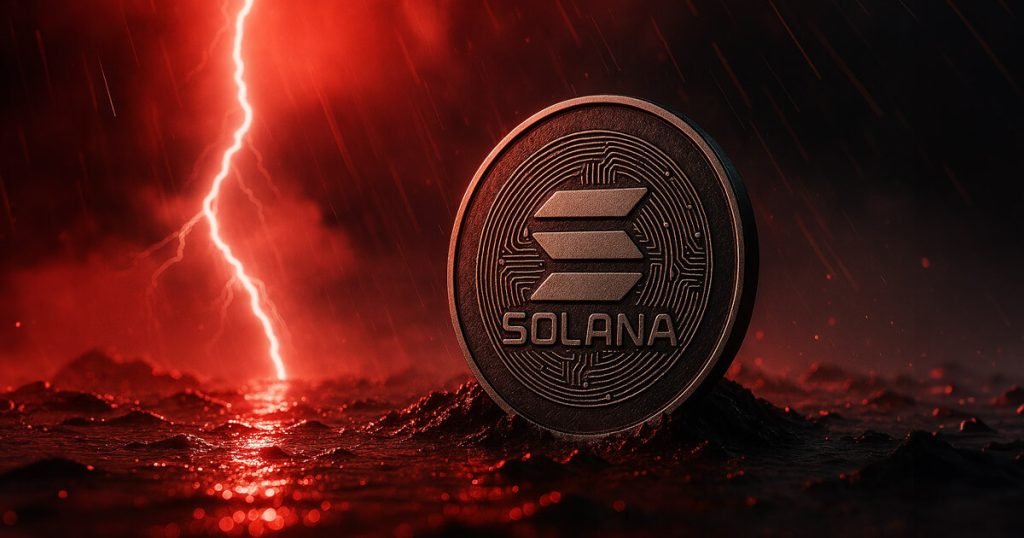Solana (SOL) Faces Significant Price Drop Amid Market Uncertainty
In recent days, Solana (SOL) has experienced a significant decline in its value, falling below the crucial psychological threshold of $100. Over the past 24 hours, SOL suffered a steep drop of more than 15%, dipping briefly to around $96 before showing a minor recovery to approximately $101. This decline marks a concerning point for investors as it represents a 14-month low, leading to the liquidation of approximately $71 million in leveraged positions tied to the asset, according to data from CoinGlass. Analysts attribute this sudden downturn to increasing global trade tensions and potential economic downturns, which have collectively shaken investor confidence and negatively impacted multiple digital assets in the cryptocurrency market.
Market Pressures and On-Chain Activity Decline
Solana’s recent price slump coincides with noticeable decreases in its on-chain activity, suggesting a broader lack of engagement from users and investors. Research from VanEck highlights a troubling trend, showing significant declines in key metrics over the past month. Specifically, average fees on the Solana network plummeted by 66%, stablecoin transfer volume decreased by 34%, and trading activity on decentralized exchanges (DEXs) fell by a staggering 53%. This continued decline has resulted in Solana’s DEX market share hitting its lowest since last October, following a brief period earlier in the year when Solana saw its performance exceed that of Ethereum’s ecosystem.
Impact of Memecoins on Solana’s Ecosystem
One of the drivers behind Solana’s declining DEX activity appears to be the waning interest in memecoins, which have previously fueled a significant amount of trading within its ecosystem. VanEck notes that daily memecoin volumes once peaked at nearly $12 billion early this year, but have since fallen dramatically to around $720 million by March. This steep decline indicates that the blockchain network’s performance is heavily reliant on the speculative nature of memecoin trading, which poses risks as enthusiasm for these tokens fades.
Growing Institutional Interest Amid Market Volatility
Despite the challenges facing Solana, there are signs of increasing interest from institutional players. Notably, the Chicago Mercantile Exchange (CME) has recently launched SOL futures contracts, which are accompanied by the introduction of Volatility Shares’ first SOL futures ETF. These developments could lead to the availability of spot-based exchange-traded products in the future, potentially opening new avenues for institutional investment in Solana and enhancing its credibility in the market.
PayPal’s Expansion and Growing Demand for SOL
Adding to the optimism amidst a challenging market situation, PayPal’s decision to expand its cryptocurrency offerings to include Solana is noteworthy. The payment giant has enabled its U.S. users to buy, sell, and transfer SOL through its main platform alongside Venmo, responding to increasing demands for broader token support from its user base. This expansion not only signifies growing mainstream acceptance of Solana but also has the potential to drive user engagement and transaction volume on the network.
Conclusion: A Complex Landscape for Solana
As Solana continues to grapple with market volatility and declining on-chain activity, it’s crucial for investors and enthusiasts to remain informed. While current pressures from global trade tensions and declining memecoin interest pose challenges, the optimism surrounding institutional interest and mainstream adoption through platforms like PayPal offers a glimmer of hope. The future of Solana will depend on its ability to revive engagement and develop its ecosystem further, as well as navigate the complex landscape of the digital asset market. With ongoing developments and adaptation to market conditions, Solana may yet find its footing in a rapidly evolving cryptocurrency environment.


